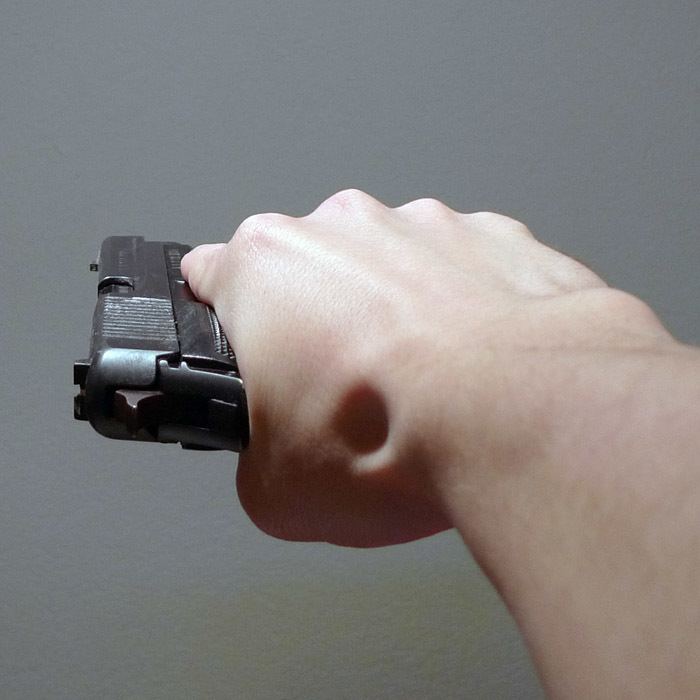 | ||
The side grip is a technique for shooting a handgun in which the weapon is rotated about ninety degrees and held horizontally instead of vertically (as is normally done). Shooting a gun in this way has no practical benefit under most circumstances and makes proper aiming very difficult, but the style has become somewhat popular in hip hop culture and among street criminals (who do not often use the gun sight) due to its portrayal in American film and television since the early 1990s.
Contents
History
Holding a weapon sideways has long been equated with risky and indiscriminate shooting. For instance, in the 1894 American novel John March, Southerner, by George Washington Cable, a character orates, "No man shall come around here aiming his gun sideways; endangering the throngs of casual bystanders!"
The side grip found some use with early 20th century submachineguns, such as the Thompson M1 or the M3 "grease gun". Because their heavy recoil made them tend to climb when fired in full automatic mode, soldiers would hold them sideways so that the bullets would spread in a horizontal rather than vertical arc, hitting more targets.
Law enforcement officers will sometimes use the side grip to shoot while holding a riot shield or ballistic shield with their other hand. Because the shield limits the field of view, lifting and tilting the gun may make the sights more visible under these circumstances. Some shooters with issues of ocular dominance will tilt the gun at a 15 to 45 degree angle in order to take advantage of their better eye; the gun held in the left hand and the sights aligned to the right eye, for example.
Although holding a gun sideways makes it hard to control and aim, it does not, as is sometimes believed, make the weapon any more prone to jamming. Because self-loading weapons eject spent casings with a force that is much stronger than gravity, the casing will not normally remain stuck in the chamber even if it is ejected upwards.
In popular culture
The side grip has been portrayed in movies since at least the 1960s, notably in the westerns One-Eyed Jacks (1961) and The Good, the Bad and the Ugly (1966). The style's cinematic benefit is that it makes it easier to see both the weapon and the actor's face in a tight camera shot.
The side grip was highly popularized with the 1993 American hood film, Menace II Society, where this technique is shown in the film's opening scene during the armed robbery of a Los Angeles, California convenience store. According to the directors, they witnessed the technique themselves in a 1987 robbery in Detroit, Michigan and used it on film because it struck them as "sloppy, edgy and realistic". Other filmmakers were fast to pick up the gesture, and it soon came to represent "arrogance and cool power" in Hollywood's visual shorthand, being used in a great number of 1990s action and gangster movies including Desperado, Payback, Seven, The Usual Suspects and Copycat.
As a result of its numerous portrayals in American film and television, the side grip is emulated in segments of American popular culture that value coolness and aggressiveness, such as hip hop music and the criminal subculture. As a result, the side grip has been increasingly used in violent armed crime in the United States. The style has become a cliché in rap culture to such an extent that a 2009 New York police statement could describe a criminal as flipping his "gun on its side like a character out of a rap video".
